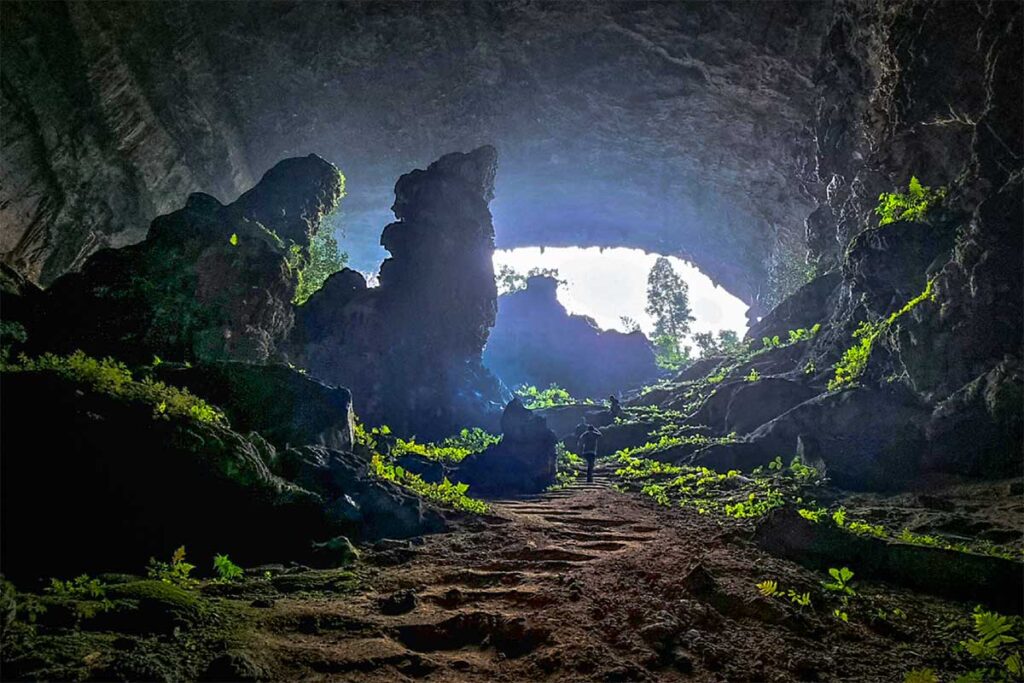What is Bat Cave (Kho Muong) like?
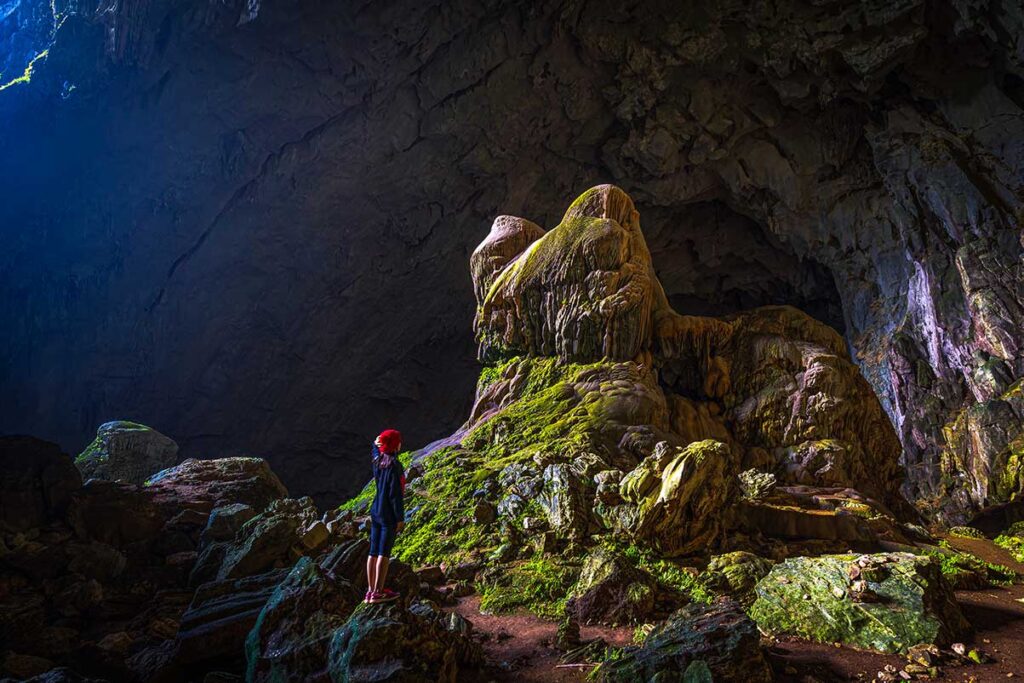
Bat Cave, also known as Hang Doi, is located deep in the core zone of Pu Luong Nature Reserve in Thanh Hoa Province. Formed more than 250 million years ago, it’s a large karst cave with a wide entrance and expansive inner chambers shaped by ancient underground rivers. Inside, you’ll find striking stalactites and stalagmites, some illuminated naturally when sunlight filters through openings above.
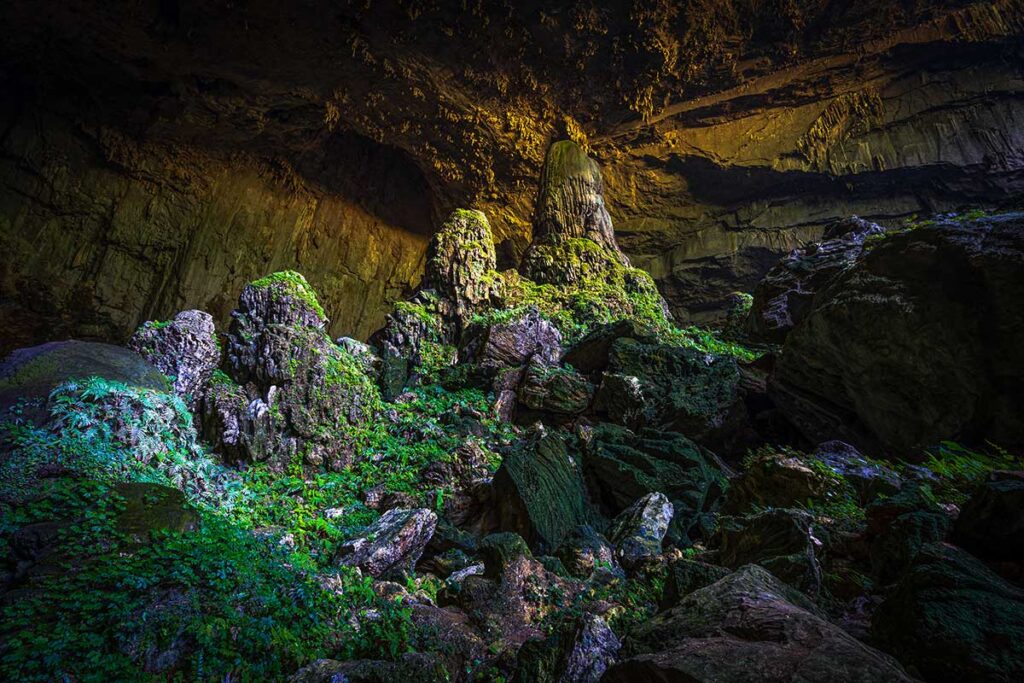
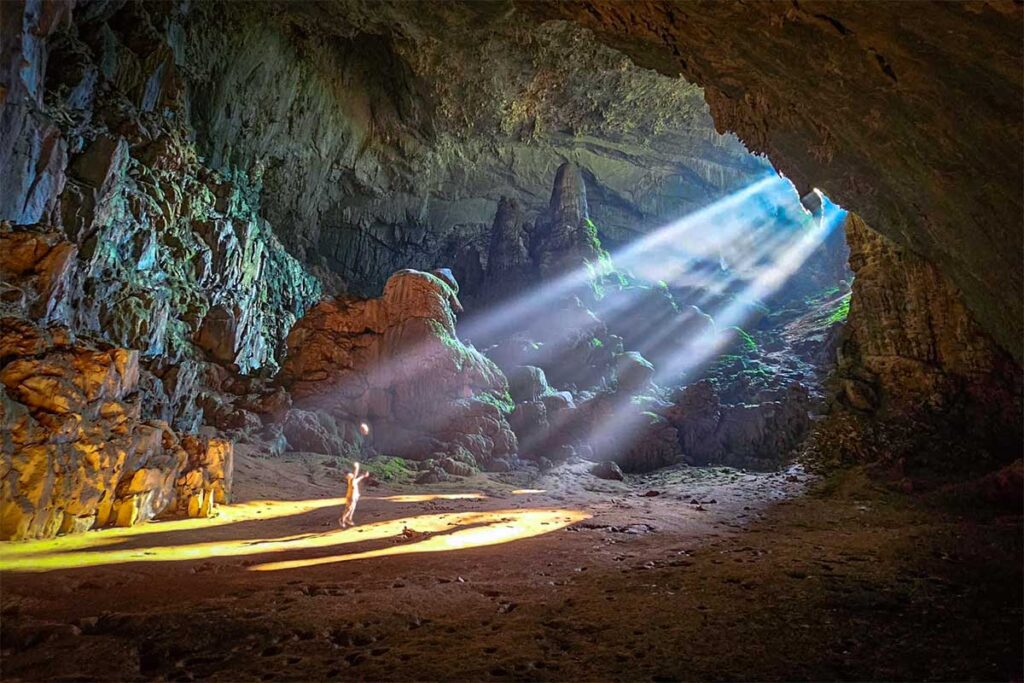
The cave is home to several species of bats, which you may hear fluttering overhead, especially in quieter moments. It hasn’t been developed for tourism — there’s no lighting or built pathways — so you’ll need to walk carefully over uneven, sometimes slippery rock surfaces. A small entrance fee (around 10,000 VND) helps support the local community in keeping the area clean and accessible.
How to get to Bat Cave in Pu Luong
Trekking is the main way
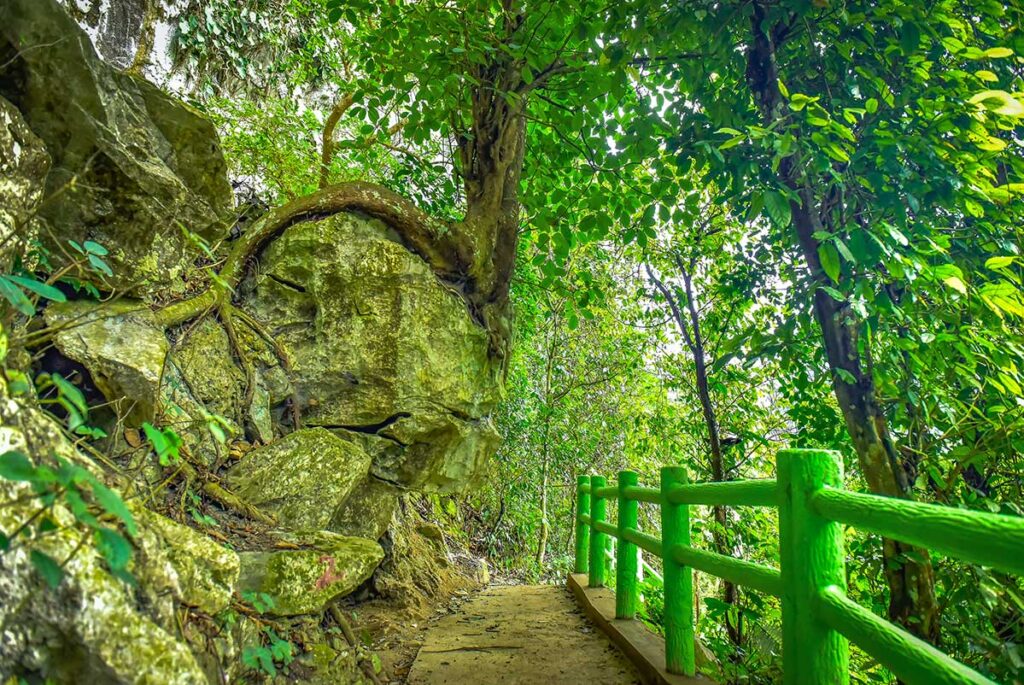
The most rewarding way to reach Bat Cave is by trekking through the surrounding valleys and rice terraces. Most guided treks include a stop at the cave, with the trail passing through scenic landscapes and ethnic minority villages. To access the cave itself, you’ll first need to reach Kho Muong Village — either on foot or by motorbike — and then walk the final stretch down a short forest path.

The trek is moderately challenging with some steep and uneven sections, especially after rain. But for most travelers with a reasonable fitness level, it’s entirely manageable and very enjoyable. The best times to trek are during the warmer months when the rice fields are green or golden — see our guide to the Best time to visit Pu Luong for tips on timing your visit around the harvest seasons.
Tip: Interested in the trekking to Bat Cave in Pu Luong? Check our tours that include transfers from Hanoi, trekking in Pu Luong with Bat Cave, water wheels, bamboo rafting and comfortable lodge stays:
Options for reaching Kho Muong
- By motorbike: You can ride a motorbike down to Kho Muong, but the road is narrow, steep, and often slippery — only recommended if you’re experienced.
- By local motorbike taxi (“xe ôm”): A popular and affordable option. Local drivers will take you down from the main road for around 80,000 VND round-trip.
- By car: Cars can’t go all the way to the village. You’ll likely be dropped at a junction and need to walk or take a motorbike from there.
- From the village to the cave: It’s a short walk downhill — about 10 to 15 minutes — but can be muddy in the rainy season, so wear proper footwear.
Visiting Kho Muong Village
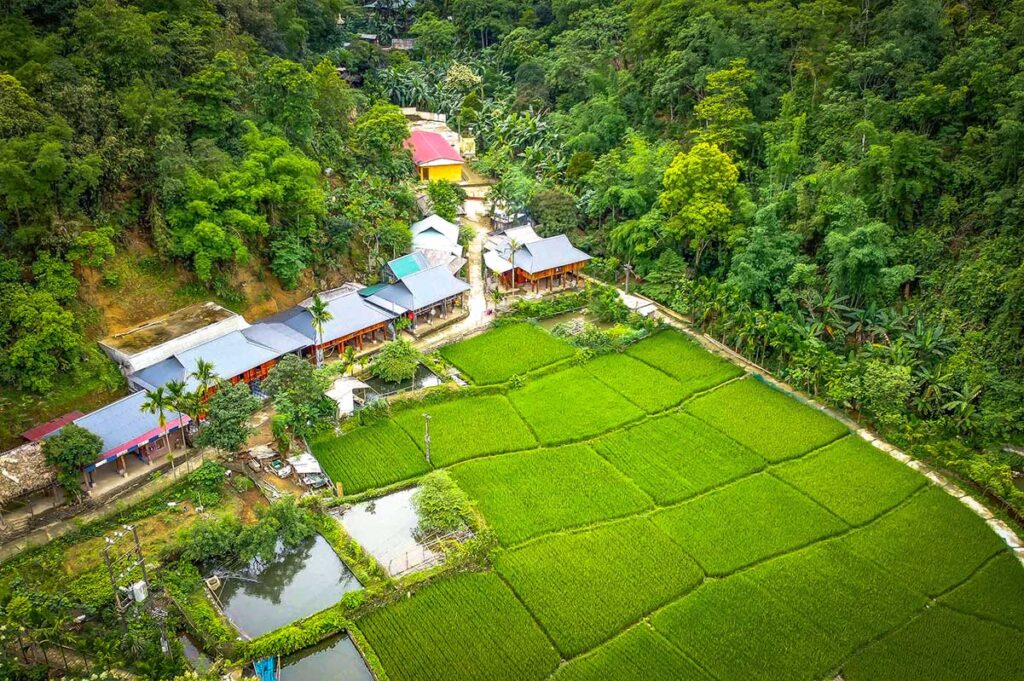
Kho Muong Village sits in a remote, bowl-shaped valley completely surrounded by limestone mountains, giving it a secluded and peaceful atmosphere. It’s home to the Thai ethnic minority, who live in traditional wooden stilt houses and farm the surrounding rice paddies and corn fields.
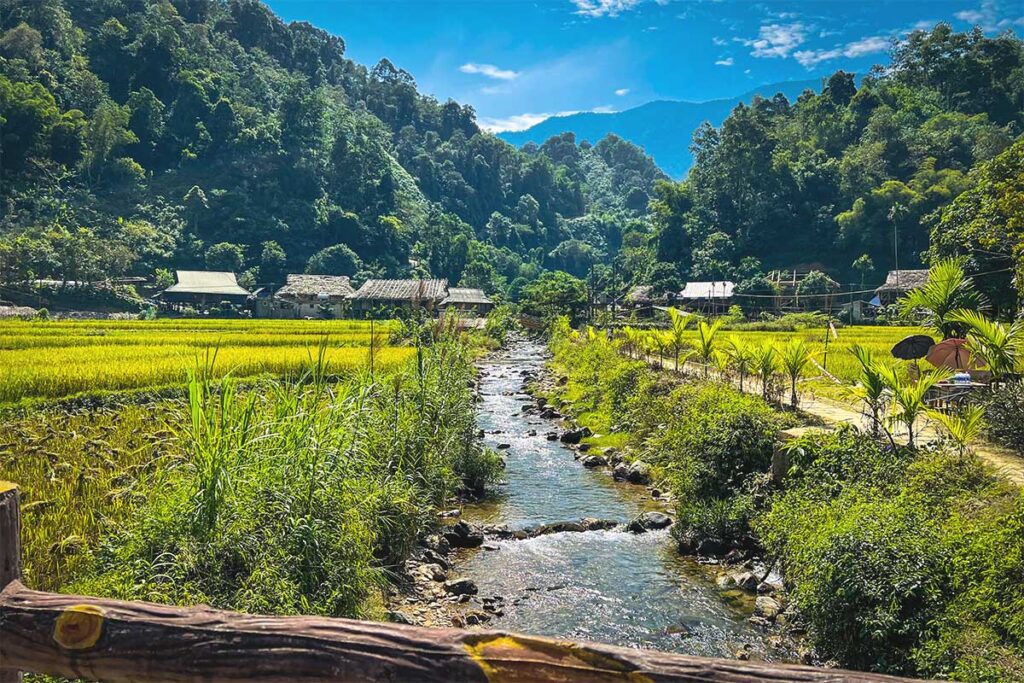
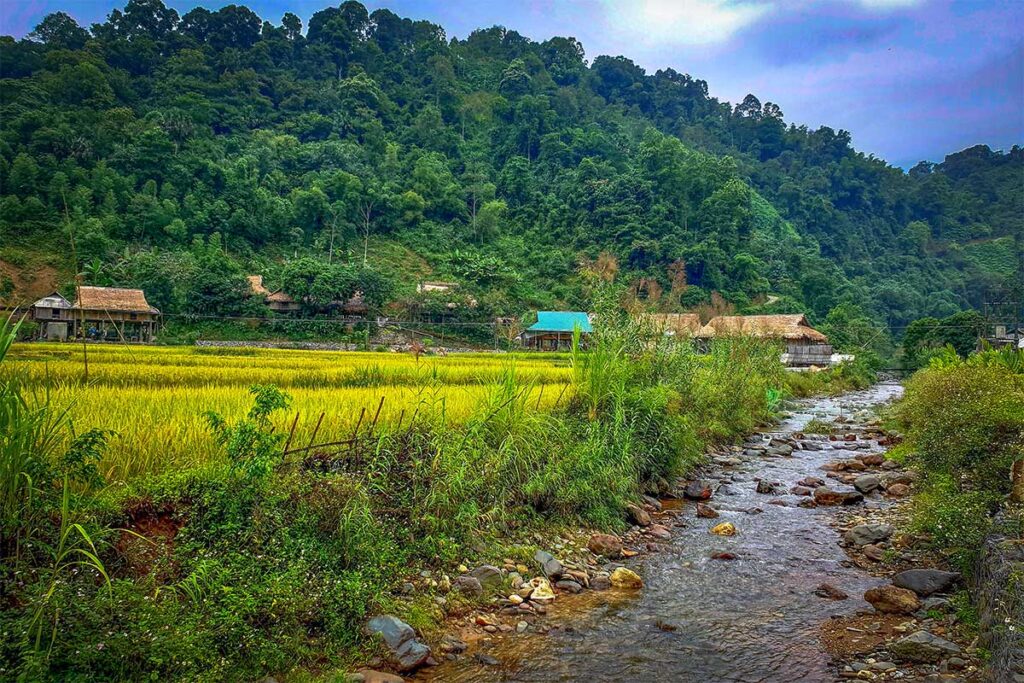
A few small homestays are available in the village, offering a simple but authentic stay with home-cooked meals and a glimpse into local life. Don’t expect modern comforts — it’s quiet, basic, and community-focused. The village hasn’t seen much tourist development, so it still feels genuine. If you’re walking through, you might see locals weaving, preparing food, or working in the fields.
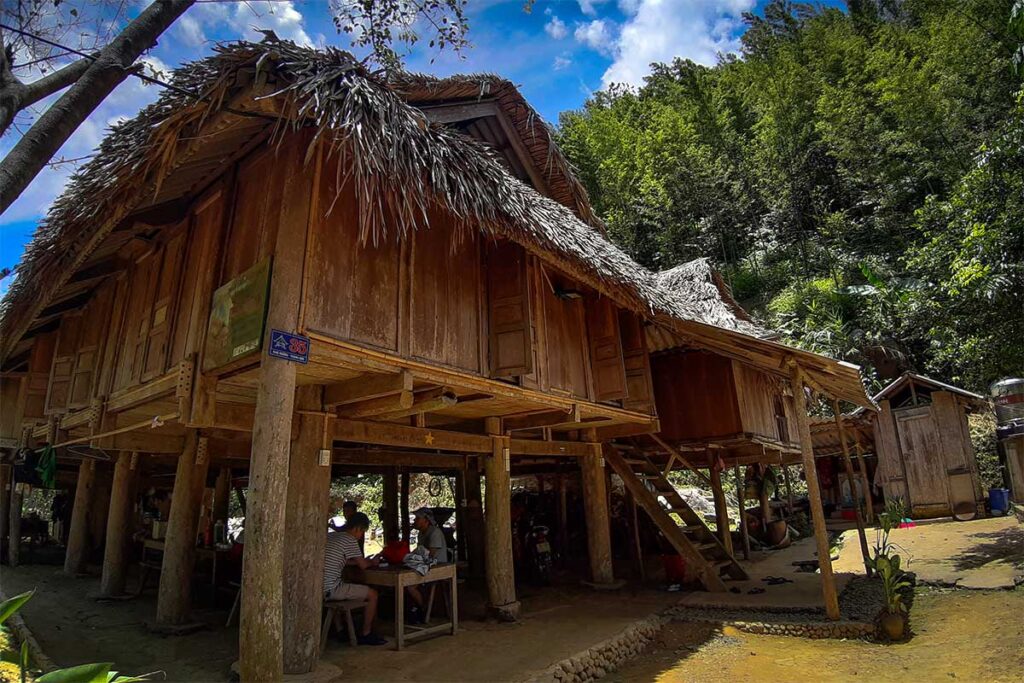
Is Bat Cave worth visiting?
Yes — especially if you enjoy caves, light adventure, and rural trekking. The cave itself is large, scenic, and entirely natural, with no artificial lighting or paved paths, which adds to its charm. But the real highlight is the journey to get there: a rewarding trek through terraced rice fields, bamboo groves, and quiet ethnic villages.
Bat Cave isn’t Vietnam’s most spectacular cave, so if you’re short on time or not interested in hiking, it might not be essential. But as part of a broader Pu Luong trekking experience, it makes a great final stop — a cool, quiet place to explore and rest after the trail. Think of the cave as the cherry on top of a very scenic and local-feeling adventure.
Tips for visiting Bat Cave and Kho Muong
What to bring
- Sturdy walking shoes — cave floor is uneven and can be slippery.
- Headlamp or flashlight — no lighting inside the cave.
- Water, sun protection, and raincoat — especially if trekking.
- Camera or phone — light entering the cave creates great photo moments.
- Small cash for entrance fee or local food.
When to go
- Cave itself can be visited year-round.
- Trekking and scenery are best from May to October (lush rice fields, harvest season).
- Avoid very wet days if walking — trails can be steep and muddy.
Organise a trekking
If you don’t drive a motorbike, the best way to reach Bat Cave is by joining a guided trek. Most routes pass through terraced rice fields, forested paths, and ethnic minority villages before ending at the cave. Doing it yourself is possible, but trails in Pu Luong aren’t marked and are easy to get lost on — even short routes between villages can be confusing. Guides know the area well, can arrange pickup after the hike, and make the whole experience smoother and more enjoyable.
Travel independently
If you prefer to go on your own and you’re comfortable driving, you can reach Kho Muong Village by motorbike. The road down is steep, narrow, and slippery after rain — not recommended for beginners. A popular option is hiring a local motorbike taxi (xe ôm), usually around 80,000 VND round-trip. If you’re coming by car, note that it won’t go all the way — you’ll have to transfer to a bike or walk the last stretch to the village. From there, it’s a short downhill walk to the cave.
